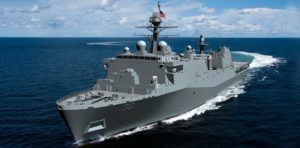
The Navy’s top officer on Wednesday said the department is pausing procurement of amphibious ships primarily because the San Antonio-class Flight II amphibious transport dock ships (LPD) are increasing in cost and starting to run late. “It's been said publicly that a year ago, the Office of the Secretary of Defense (OSD) made a decision to take a pause and do a study on LPDs and whether or not we're going to continue with the current hull, or whether or…

 By
By 











